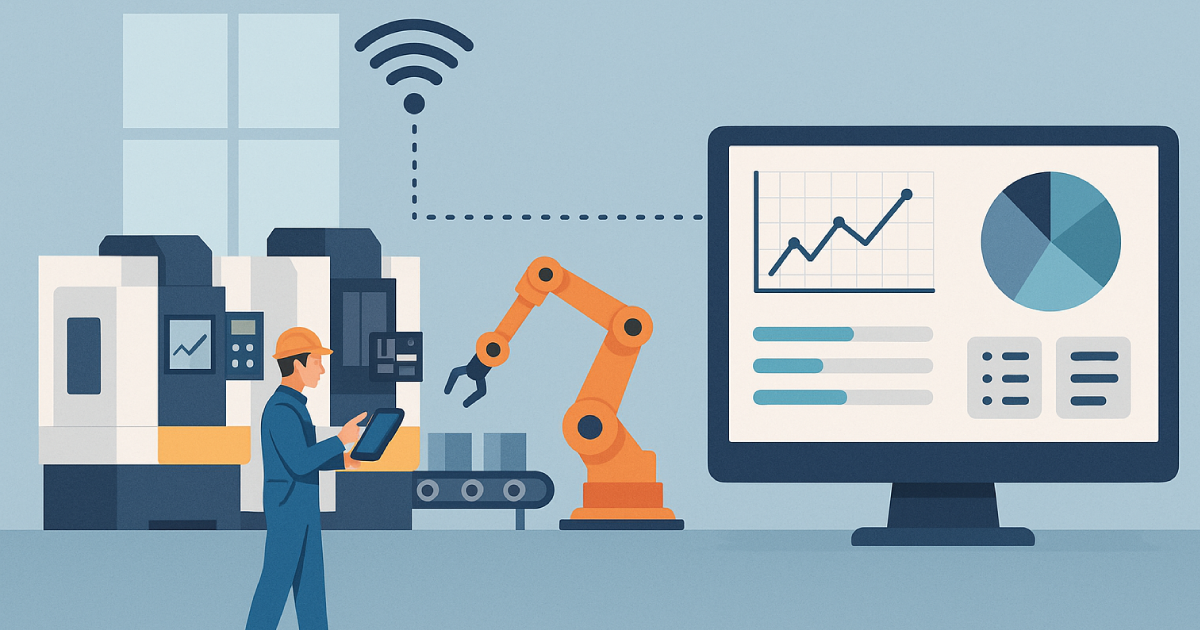Today, in manufacturing, waiting hours—or even days—for production data feels like driving with a blindfold on. Without fast insights into machine health, material use, and work-in-progress, you face delays, quality slips, and late deliveries. However, by linking your shop floor to your ERP through real-time data integration, you move from guessing to knowing—so you can act quickly and keep work flowing smoothly.
Why Real-Time Data Integration Matters
First, real-time data integration gives you instant visibility. You see what’s happening on every machine and line right now, instead of relying on end-of-day reports. Next, it helps you spot small issues before they become big problems. For example, by watching machine temperatures or output rates, you can fix a fault before it causes a full stop. In addition, this level of insight lets you balance workloads, reroute jobs around downtime, and keep your team on track. Finally, real-time checks catch quality issues at the moment they happen—so you scrap less and please customers more.
Step 1: Look at What You Have Now
Start by listing all the systems you use on the shop floor:
PLCs and SCADA, which control machines and record basic data like speed or cycle counts.
MES (Manufacturing Execution Systems), which track jobs, resources, and checks.
Handheld Scanners, for recording moves of materials and finished goods.
ERP, your main system for planning, buying, and finance.
Then, note where data gets stuck or typed in by hand. That shows you where real-time data integration can help most.
Step 2: Pick the Right Middleware
Rather than building single connections for each system, choose a platform that links everything at once:
OPC UA Gateways: These tools translate machine data into a standard format.
API Platforms: Many MES and ERP systems offer ready-made web links (APIs) you can use right away.
Edge Devices: Small boxes that sit on your network, clean up noisy data, and send only what matters to your ERP.
Moreover, make sure your middleware can send data both ways. That way, your ERP can update work orders on shop-floor screens in real time, too.
Step 3: Define Your Key Data and Goals
Decide which numbers matter most and how you’ll track them:
Throughput: How many units you make per shift.
OEE (Overall Equipment Effectiveness): A simple mix of uptime, speed, and quality.
WIP (Work In Progress): The number of units waiting for the next step.
Downtime Reasons: Breakdowns, changeovers, or missing materials.
By setting clear definitions up front, everyone—from operators to managers—uses the same language. This makes sure your dashboards and reports match what people see on the floor.
Step 4: Roll It Out in Phases
Instead of doing everything at once, follow these steps:
Pilot One Line: Connect a single machine or cell first. Check that data is correct and dashboards are clear.
Add Neighboring Areas: Next, link nearby workstations, like packing or QA stations.
Include Mobile Scans: Bring in barcode or RFID readers so material moves update your ERP instantly.
Full ERP Link: Finally, automate your work-order confirmations, stock updates, and cost postings in real time.
Meanwhile, gather feedback at each step. This lets you fix small issues before they become big headaches.
Step 5: Show and Act on Your Data
Once data flows in, build simple views:
Operator Screens: Show current jobs, target times, and checklists.
Supervisor Dashboards: List OEE, throughput, and alerts.
Executive Overviews: Highlight trends, goals vs. actuals, and key issues.
Then, set up alerts—for instance, an email or text if a line drops below a target. That way, someone can step in right away.
Tips for Long-Term Success
Furthermore, lock down data access and security. Make sure each person has the right permissions. Also, train your team on new screens and explain why data accuracy matters. Finally, keep improving: review your goals monthly, tweak alerts, and expand integration to suppliers or customers when you’re ready.
CONCLusion
Real-time data integration isn’t just a nice-to-have—it’s a must for today’s makers. By following these simple steps, you’ll gain instant visibility, prevent surprises, and turn data into action. As a result, your shop floor runs smoother, quality stays high, and you stay ahead of the competition.
Start by mapping existing systems—PLCs, MES, mobile scanners, and ERP—and identifying data silos. Then select middleware (OPC UA gateways or API platforms) to broker bi-directional data flows between machines and your ERP.
Deploy role-specific dashboards: operator HMI panels for work-order details, supervisor cockpits for OEE and throughput, and executive scoreboards for high-level KPIs. Automated alerts ensure immediate response to performance dips.
Establish clear data governance and security protocols, engage users through training and change management, and pursue continuous improvement by regularly reviewing KPIs, refining alerts, and expanding integration scope.






